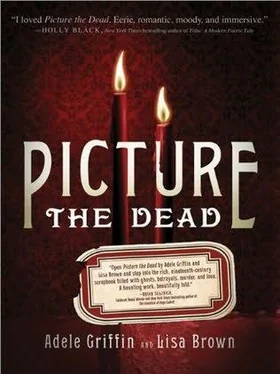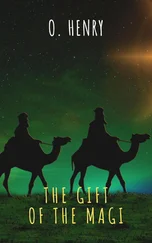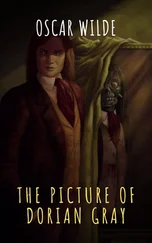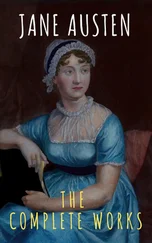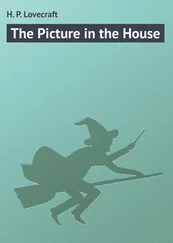Uncle Henry is much the same, but I knew that, too. He still trundles back and forth from Boston regularly once I passed him on Fulton Street and he stared right through me, though his cheeks purpled and he immediately took out his waistcoat watch to study. No matter. We have nothing to say to each other.
Finally, Mavis brings news of Quinn, who has yet to take a position at his father’s bank. His retreat has been utter and absolute. A hermit prone to midnight walks and endless card games where he is the only player. Last winter he reconfigured all of the gardens himself, hauling down shrubbery in the dead of night and uprooting Aunt’s plantings.
“But he refuses to chop down that dratted butternut tree,” Mavis tells me. “’Spite that lightning split it in two last summer, and the wood is mostly dead and rotting. Many’s the evening I’d look out the window to see him sitting beneath it, gazing out at nothing.” She shivers. “Oh, but he’s a haunted man, for sure. The day girls never stay hardly nobody has nothing to do with him, save that silly Miss Wortley.”
Quinn doesn’t have to live this way. It’s common knowledge that he’d only have to clap his hands and he could be betrothed to Flora Wortley, thus ending any Pritchett financial woes. Mavis tells me that poor Flora calls every other Tuesday, her ringlets plump as pickles, her hopes as exposed as her décolletage. “Mister Pritchett is always courtly,” Mavis reports, “but he never shows any particular interest in her bosom or her bank account.”
Strange what we are capable of, and what we balk on.
Quinn might not have peace, but I’ve got mine. Will led me to the truth. Once that truth was known, he let me go. In the same spirit, Toby has receded to the burnish of my fondest memories. I wear my locket, and I keep their photographs beside my bed, but time is fading the tonal papers to ever lighter shades of gray and brown. It’s a natural process and inevitable. Both boys had delighted in the joy of life. For me to fall into grief would not have pleased either of them.
So I try not to dwell on what I have lost as I take my place in the to and fro of city life. But in the art of photography I have yoked my present to my past. For my last birthday I bought myself a Dallmeyer, shipped all the way from London. My parlor doubles as a studio, where I fashion simple images certainly no phantom spirits. Rather, I pay local children to pose for tableaux vivants , or recreations of poetic works, or studies in truth and beauty.
The years will tell if I have any talent. Foremost, a photographer needs a teacher. Which is why I’ve brought some plates to Geist today.
“Miss Lovell.” He greets me as amiably as ever.
Viviette’s greeting is more reserved, but I know she’ll have tea and fresh Irish scones waiting an improvement on Geist’s stale sandwiches of last year. The birth of little Seamus and maybe her new position as lady of the house has set her mind at ease and clears her to do what she does best.
“A lovely day,” I mention as I hand Geist my plates and follow him into the sitting room. He will look at my efforts later. Right now there is other business to attend to. It had been Viviette’s suggestion when she’d run into me earlier this morning at the fish market. Viviette is a woman of few words, but when she speaks, I have learned, it’s always wise to listen.
The day is sunless. A cold, shy wind rattles the dying leaves. It’s a perfect day for a séance. If anyone can find a passage over to the other side, it is Viviette.
And if anyone can follow her there, it is I.
As we sit at the table, her hand grips mine, soft but tight.
I feel the surge of her power, maybe. Or my own anticipation. I want so badly to believe that I’m already halfway there.
Geist smiles and tucks his chin to his chest. His own faith is absolute. “Let us begin.”
Notes, Illustrations,
and Acknowledgments
Jennie’s story has one foot in pure fiction and the other firmly planted in historical fact. We really had so little to fabricate ourselves bits of history, when needed, just seemed to fall neatly into place.
By the autumn of 1864, when our story takes place, the American Civil War had been going strong for three years. Lincoln had issued his Emancipation Proclamation, the battle at Gettysburg had been waged with enormous casualties on both sides, and Ulysses S. Grant was commander of the Union Army. And yet some of the war’s most vicious battles had yet to be fought.
Will and Quinn Pritchett, Tobias Lovell, and Nate Dearborn all helped comprise the Twenty-eighth Massachusetts Infantry. Also known as one of four “Irish Brigades,” the Twenty-eighth enlisted soldiers hailed from a variety of backgrounds, including Canadian and other non-U.S. citizens, newer recruits who were mustered in the last years of the war. The boys of the Twenty-eighth fought the Union Army’s major battles of the eastern theater; Antietam, Gettysburg, and of course, the Wilderness. Collected in the National Park Service Archive is proof of prisoners from the Twenty-eighth who had been captured in the Wilderness and brought to Andersonville to serve their sentences.
Andersonville, also known as Camp Sumter, was a Confederate prisoner of war camp in Georgia. Built in 1864 to house the spillover of Union prisoners captured by the Confederate Army, it saw more than 45,000 men pass through its gates. Of these, thirty percent never made it out. Overcrowded, rife with disease, and lacking adequate food and shelter, Andersonville became an infamous symbol of cruelty and death. The jailers were not only to blame, as the imprisoned themselves often had a hand in their own downfall. Most notoriously, a group of prisoners known as the “Andersonville Raiders” terrorized fellow inmates with theft and murder. Hunted down and rounded up, the ringleaders were summarily executed, while other suspected Raiders were beaten to death by their peers in an attempt to serve “justice.”
The death and despair brought on by the Civil War eventually gave rise to the Spiritualist movement. Spiritualism was a religious ideology popular from the mid-nineteenth through the beginning of the twentieth century. Its followers believed not only that people lived on after death, but could be contacted with the help of “mediums”: people who were unusually sensitive to communication with the spirit world. Spiritualists believed in a progressive ideology, and those who followed Spiritualist teachings were more than likely to be abolitionists, suffragists, and labor reformers. Spiritualism was not relegated to society’s fringes: figures as respectable as the First Lady, Mary Todd Lincoln, had partaken in séance circles, desperate to communicate with her deceased beloved. As the war progressed and casualties mounted on the battlefield, increasing numbers of the bereaved became obsessed with contacting the dead.
During this same time, people on both sides of the Atlantic were developing a new way of recording one’s experience of the visual world. Photography, still a new technology at the time of our story, was becoming more accessible and cheap enough to be consumed by the masses. By the late 1850s, albumen prints on photographic paper were supplanting the more expensive and labor-intensive daguerreotypes and ambrotypes, which were printed on glass and metal. Cartes de visite , photographic prints mounted on small cards, were inexpensive and easily reproduced. Uniformed Civil War soldiers ordered cdv portraits to send back home to their families, while sweethearts and family members sent their own pictures to the soldiers in the field as mementos. Photographs also played a part in bringing home the horrors of the battlefield. This would be the first time that a war would be so realistically paraded in front of civilian eyes.
Читать дальше
